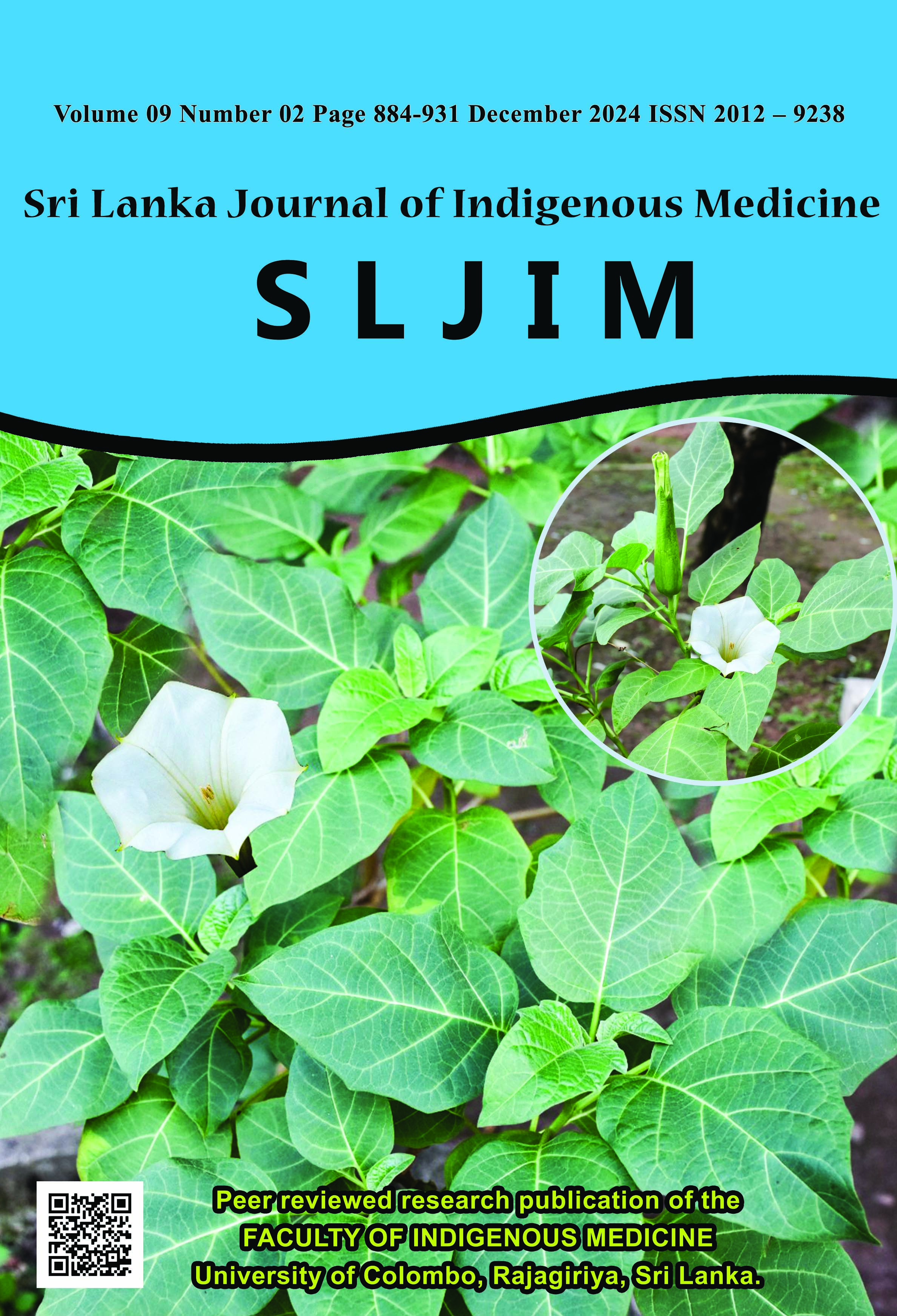Heavy metal and HPTLC fingerprint analysis of Siddha drug, Pun podi prepared from Datura metel
Piratheepkumar R.1, Amal Wageesha N.D.2 and Sivakanesan R.3
Keywords:
Datura metel, Heavy metals, Microelements, Pun podiAbstract
Pun podi, a potent tropical combination used in Siddha medicine, contains sulfur and Datura metel fruit. Despite its importance, research into the various compositions of Pun podi due to diverse preparation methods and seasonal variations remains lacking. To achieve the above objective, the present study was conducted. The Pun podi was prepared in three ways by using Datura metel fruit, collected in three different seasons. The different methods used to prepare three Pun podi and named that different Pun podi as Pun podi 1, 2, and 3. Heavy metal analysis was performed by using Bruker S8-Tiger WD-XRF analyzer. High-Performance Thin Layer Chromatography was used to analyze fingerprints on three different samples. The data was then analyzed using a standard statistical approach SPSS to identify significant differences between the samples throughout different seasons. SO3, K2O, P2O5, Ca, Na2O, SiO2 Cl, MoO3 showed significant differences (p <0.05) between the Pun podi prepared by different methods while MgO, PbO, TiO2, Al2O3, and Fe2O3 did not show significant differences (p >0.05) among Pun podi. Statistically significant disparities were observed in the oxide form of microelements present in Pun podi, derived from Datura metel fruit collected during different seasons (p < 0.05). Specifically, other microelements except Fe2O3, PbO, and TiO2 in Pun podi showed notable discrepancies (p < 0.05) linked to seasonal variations. Furthermore, Mg, Ca, Si, Pb, Ti, Mo, and Fe demonstrated insignificant differences among Pun podi prepared through various methods (p > 0.05). However, excluding these microelements, significant distinctions were noted across other elements in Pun podi derived from different preparation methods (p < 0.05). Beside P, Fe, Mo and other microelements showed significant differences with respect to seasons (p < 0.05). Pun podi 2 notably contained a higher concentration of both oxidized and elemental microelements compared to other Pun podi variants. Evidently, both seasonal factors and preparation methods exerted discernible influences on the microelement composition of Pun podi. HPTLC results showed, 04 spots in Pun podi 2, 2 spots in Pun podi 1, and one spot in Pun podi 3, at 254 nm. The values obtained from these tests were less than one.


